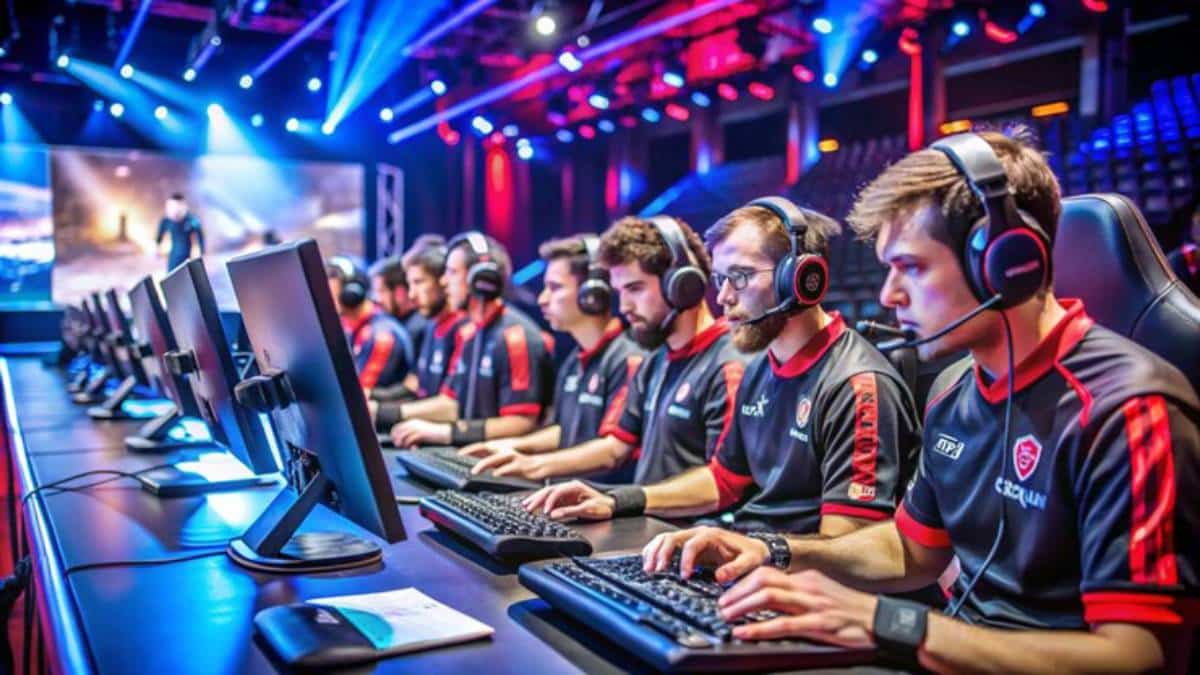
How Data Analytics is Revolutionizing Esports Strategies
Esports is changing fast, and data analytics is leading this shift. As competitive gaming grows worldwide, teams use data. They shape strategies, enhance player training, and improve fan engagement. This blog looks at how data analytics is changing esports strategies. It helps teams gain an edge and shifts the competitive gaming scene.
The Importance of Data Analytics in Esports
Data analytics is now a key part of esports, just like traditional sports. Collecting, analysing, and interpreting data provides insights that can boost performance and strategy. So, why is data analytics so crucial in esports?
Esports is a field where milliseconds can change a match’s outcome. Games like “League of Legends” and “Counter-Strike: Global Offensive” need precision and speed. This demand requires analysis beyond human intuition. Teams use data analytics to examine gameplay closely. They identify patterns and trends that may go unnoticed.
Esports is competitive. Teams always look for ways to get an edge over their rivals. Data analytics offers a scientific way to develop strategies. It helps teams improve their tactics using objective evidence, not just guesses. This not only enhances performance but also fosters innovation within the industry.
Key Benefits of Using Data Analytics in Gaming Strategies
Using data analytics in gaming strategies has many benefits. It can boost a team’s performance and improve decision-making. Here are some key advantages:
Enhanced Performance Analysis
Data analytics enables teams to perform in-depth performance analysis. Teams can improve by checking metrics. They should look at player movements, reaction times, and decision-making patterns. This analysis helps coaches and players focus their training on specific weaknesses. As a result, it improves performance during games.
Strategic Decision-Making
In the fast-paced world of esports, strategic decision-making is paramount. Data analytics provides teams with actionable insights that inform their strategies. By analysing how opponents play, teams can predict their moves and counter them. This gives teams a tactical edge. Data-driven decision-making also lowers the risk of relying only on gut feelings. This approach leads to more consistent results.
Player Development and Scouting

Data analytics is key for player development and scouting. Teams can identify rising stars and potential recruits by tracking player stats and performance over time. This method uses data to help teams choose players who can thrive in major competitions.
Fan Engagement and Experience
Beyond the competitive aspect, data analytics enhances fan engagement and experience. Esports organizations can make broadcasts more engaging. They do this by giving fans detailed stats and insights. This boosts fan loyalty and draws in new audiences to competitive gaming.
Additional Expert Tips & Common Mistakes to Avoid
Data analytics offers clear benefits in esports. However, teams should know some best practices and common pitfalls. This helps them get the most from analytics.
Best Practices
A key practice in data analytics is to collect relevant and accurate data. Teams should target key performance indicators (KPIs) that match their strategic goals. Also, regular data updates and reviews are crucial. This keeps strategies in line with the changing dynamics of esports.
Another important practice is integrating analytics into the team’s culture. Players and coaches should learn to understand data. This will help create a data-driven mindset in the organisation and ensure that insights are effectively translated into actionable strategies.
Common Mistakes

Teams often make the mistake of relying too much on data. They forget about the human side. Data gives us useful insights. Still, we must balance analytics with player intuition and creativity. Esports is not solely a numbers game; it requires a blend of analytical and human skills.
Another pitfall is failing to adapt to new data and insights. Esports is constantly evolving. Teams that don’t adapt their strategies to new data may fall behind. Continuous learning and adaptation are key to staying competitive.
Advanced Insights and Expert Recommendations
Expert insights and recommendations can greatly help teams enhance their data analytics.
Embracing Machine Learning and AI
Machine learning and artificial intelligence (AI) are revolutionising data analytics in esports. Using these technologies, teams can automate data collection and analysis, which helps them find deeper insights more efficiently. AI-driven analytics find patterns and correlations that traditional methods might miss, giving businesses a competitive edge.
Collaborative Analytics Platforms
Collaborative analytics platforms are becoming increasingly popular in esports. These platforms help teams share data and insights. This builds a collaborative approach to developing strategies. Teams can share their knowledge and resources. This teamwork leads to better and more creative strategies.
Personalised Training Programs
Data analytics enables the creation of personalised training programs tailored to individual players. Teams can analyze a player’s strengths and weaknesses, which helps them create tailored training plans that focus on specific areas that need improvement. This personalised approach enhances player performance and boosts morale and motivation.
Conclusion: The Future of Data Analytics in Esports

The esports industry is growing, so data analytics will play a bigger role. Teams using data-driven strategies gain a significant edge in competition. But those ignoring analytics may fall behind.
The future of esports is bright, with data analytics at its core. Using data, teams can boost performance, spark innovation, and engage more effectively. Data analytics will keep changing esports strategies and shaping the future of competitive gaming.
In conclusion, using data analytics in esports isn’t just a trend. It’s a big change that is reshaping how teams compete and succeed. As the industry changes, those using analytics will lead this exciting field.


